| The Boeing Company | |
|---|---|
| Type | Public (NYSE: BA, TYO: 7661) |
| Founded | Seattle, Washington (1916) |
| Headquarters | Chicago, Illinois |
| Key people | W. James McNerney, Jr., CEO |
| Industry | Aerospace and Defense |
| Products | Commercial airliners Military aircraft Munitions Space systems Computer Services |
| Revenue | |
| Net income | |
| Employees | 153,000 (2006) |
| Divisions | Boeing Commercial Airplanes Integrated Defense Systems Others |
| Subsidiaries | Aviall Jeppesen Boeing Australia Boeing Defence UK |
| Slogan | Forever New Frontiers |
| Website | Boeing.com |
The Boeing Company (NYSE: BA, TYO: 7661) is a major aerospace and defense corporation, originally founded by William Edward Boeing. Its international headquarters is in Chicago, Illinois, USA. Boeing is the largest global aircraft manufacturer by revenue, the second largest by deliveries and the second-largest aerospace and defense contractor in the world.[2]
Boeing has long been one of the world’s largest civil aircraft companies. In 2006, it took 55% of global commercial aircraft orders for the first time since 2000. The largest exporter in the United States, Boeing’s stock is a component of the Dow Jones Industrial Average.
[edit] History
[edit] Before 1950s
Boeing was incorporated in Seattle, Washington by William E. Boeing, on July 15, 1916, as "Pacific Aero Products Co." following the June 15 maiden flight of one of the two "B&W" seaplanes built with the assistance of George Conrad Westervelt, a U.S. Navy engineer. On May 9, 1917, the company became the "Boeing Airplane Company". William E. Boeing had studied at Yale University and worked initially in the timber industry, where he became wealthy and acquired knowledge about wooden structures. This knowledge would prove invaluable in his subsequent design and assembly of airplanes.
In 1927 Boeing created an airline named Boeing Air Transport, which merged a year later with Pacific Air Transport and the Boeing Airplane Company. The company changed its name to United Aircraft and Transport Corporation in 1929 and acquired Pratt & Whitney, Hamilton Standard Propeller Company, and Chance Vought. United Aircraft then purchased National Air Transport in 1930. The Air Mail Act of 1934 prohibited airlines and manufacturers from being under the same corporate umbrella, so the company split into three smaller companies - Boeing Airplane Company, United Airlines, and United Aircraft Corporation, the precursor to United Technologies. As a result, William Boeing sold off his shares.
Shortly after, an agreement with Pan American World Airways (Pan Am) was reached, to develop and build a commercial flying boat able to carry passengers on transoceanic routes. The first flight of the Boeing 314 Clipper was in June 1938. It was the largest civil aircraft of its time, with a capacity of 90 passengers on day flights, and of 40 passengers on night flights. One year later, the first regular passenger service from the US to the UK was inaugurated. Subsequently other routes were opened, so that soon Pan Am flew with the Boeing 314 to destinations all over the world.
In 1938, Boeing completed work on the Model 307 Stratoliner. This was the world’s first pressurized-cabin transport aircraft, and it was capable of cruising at an altitude of 20,000 feet. — above most weather disturbances.
During World War II, Boeing built a huge number of bombers. Many of the workers were women whose husbands had gone to war. In the beginning of March 1944, production had been scaled up in such a manner that over 350 planes were built each month. To prevent an attack from the air, the manufacturing plants had been covered with greenery and farmland items. During these years of war the leading aircraft companies of the US cooperated. The Boeing-designed B-17 bomber was assembled also by Lockheed Aircraft Corp. and Douglas Aircraft Co., while the B-29 was assembled also by Bell Aircraft Co. and by Glenn L. Martin Company.
After the war, most orders of bombers were canceled and 70,000 people lost their jobs at Boeing. The company aimed to recover quickly by selling its Stratocruiser, a luxurious four-engine commercial airliner developed from the B-29. However, sales of this model were not as expected and Boeing had to seek other opportunities to overcome the situation. The company successfully sold military aircraft adapted for troop transportation and for aerial refueling.
[edit] 1950s
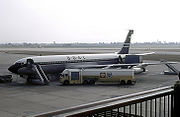
In the mid-1950s technology had advanced significantly, which gave Boeing the opportunity to develop and manufacture totally new products. One of the first was the guided short-range missile used to intercept enemy aircraft. By that time the Cold War had become a fact of life, and Boeing used its short-range missile technology to develop and build an intercontinental missile.
In 1958, Boeing began delivery of its 707, the United States' first commercial jet airliner, in response to the British De Havilland Comet, French Sud Aviation Caravelle and Soviet Tupolev Tu-104, which were the world’s first generation of commercial jet aircraft. With the 707, a four-engine, 156-passenger airliner, the US became a leader in commercial jet manufacture. A few years later, Boeing added a second version of this aircraft, the 720, which was slightly faster and had a shorter range. A few years later, Boeing introduced the 727, a commercial jet airliner of similar size but with three engines, designed for medium-range routes. The 727 was immediately well accepted as a comfortable and reliable aircraft by passengers, crews, and airlines. Although production was discontinued in 1984, at the turn of the millennium nearly 1,300 727s were still in service at airlines around the world.
[edit] 1960s
Vertol Aircraft Corporation was acquired by Boeing in 1960,[3] and was reorganized as Boeing's Vertol division. The twin-rotor CH-47 Chinook, produced by Vertol, took its first flight in 1961. This heavy-lift helicopter remains a work-horse vehicle up to the present day. In 1964, Vertol also began production of the CH-46 Sea Knight.
In 1967, Boeing introduced another short- and medium-range airliner, the twin-engine 737. It has become since then the best-selling commercial jet aircraft in aviation history. The 737 is still being produced, and continuous improvements are made. Several versions have been developed, mainly to increase seating capacity and range.
The roll-out ceremonies for the first 747-100 took place in 1968, at the massive new factory in Everett, about an hour's drive from Boeing's Seattle home. The aircraft made its first flight a year later. The first commercial flight occurred in 1970. The 747 has an intercontinental range and a larger seating capacity than Boeing's previous aircraft.
Boeing also developed hydrofoils in the 1960s. The screw driven USS High Point (PCH-1) was an experimental submarine hunter. The patrol hydrofoil USS Tucumcari (PGH-2) was more successful. Only one was built, but it saw service in Vietnam and Europe before running aground in 1972. Its innovative waterjet[citation needed] and fully submersed flying foils were the model for the later Pegasus class patrol hydrofoils and Jetfoil ferries in the 1980s. The Tucumcari and later boats were produced in Renton. While the Navy hydrofoils were withdrawn by the end of the 1980s, the swift and smooth Boeing Jetfoils are still in service in Asia.
[edit] 1970s
In the beginning of the 1970s, Boeing faced a new crisis. The Apollo program, in which Boeing had participated significantly during the preceding decade, was almost entirely canceled. Once more, Boeing hoped to compensate with sales of its commercial airliners. At that time, however, there was a heavy recession in the airlines industry so that Boeing did not receive one single order for more than one year. Boeing's bet for the future, the new 747, was delayed in production and exceeded its estimated development budget. Another problem was that in 1971, the U.S. Congress decided to stop the financial support for the development of the supersonic 2707, Boeing's answer to the British-French Concorde, forcing the company to discontinue the project. The company had to reduce the number of employees from over 80,000 to almost half, only in the Seattle area.
In January 1970, the first 747, a four-engine long-range airliner, flew its first commercial flight. This famous aircraft completely changed the way of flying, with its 450-passenger seating capacity and its upper deck. Until 2001, Boeing had been the only aircraft manufacturer to offer such an airliner and has delivered nearly 1,400 units. (Airbus now offers the A380, which when delivered will be the largest operational airliner). The 747 has undergone continuous improvements to keep it technologically up-to-date. Larger versions have also been developed by stretching the upper deck.
During the 1970s, Boeing also developed light rail vehicles which were used in San Francisco, Boston and Morgantown, WV. They were a limited success as different models would be chosen to replace them by the 2000s, although the Morgantown, WV Personal Rapid Transit (PRT) is still in active service at West Virginia University. Most of the Boston cars were decommissioned and destroyed by early 2007.[citation needed]
[edit] 1980s
In 1983, the economic situation began to improve. Boeing assembled its 1,000th 737 passenger airliner. During the following years, commercial aircraft and their military versions became the basic equipment of airlines and air forces. As passenger air traffic increased, competition was harder, mainly from a European newcomer in commercial airliner manufacturing, Airbus. Boeing had to offer new aircraft, and developed the single-aisle 757, the larger, twin-aisle 767, and upgraded versions of the 737. An important project of these years was the Space Shuttle, to which Boeing contributed with its experience in space rockets acquired during the Apollo era. Boeing participated also with other products in the space program, and was the first contractor for the International Space Station. At the same time, several military projects went into production, the Avenger air defense system and a new generation of short-range missiles. During these years, Boeing was very active in upgrading existing military equipment and developing new ones.
[edit] 1990s

Boeing was one of seven companies competing for the Advanced Tactical Fighter. Boeing's entry was not selected but, as part of an agreement with General Dynamics and Lockheed, all three companies would participate in the development if one of the three company's design was selected. The Lockheed design was eventually selected and developed into the F-22 Raptor.
In April 1994, Boeing introduced the most modern commercial jet aircraft at the time, the twin-engine 777, with a seating capacity of between 300 and 400 passengers in a standard three class layout, in between the 767 and the 747. The longest range twin-engined aircraft in the world, the 777 was the first Boeing airliner to feature a "fly-by-wire" system and was conceived partly in response to the inroads being made by the European Airbus into Boeing’s traditional market. This aircraft reached an important milestone by being the first airliner to be designed entirely by using CAD techniques. Also in the mid-1990s, the company developed the revamped version of the 737, known as the “Next-Generation 737”, or 737NG. It has since become the fastest-selling version of the 737 in history, and on April 20, 2006 sales passed those of the 'Classic 737', with a follow-up order for 79 aircraft from Southwest Airlines. The “Next-Generation 737” line includes the 737-600, the 737-700, the 737-800, and the 737-900.
In 1996, Boeing acquired Rockwell’s aerospace and defense units. The Rockwell products became a subsidiary of Boeing, named Boeing North American, Inc. In August of the next year, Boeing merged with McDonnell Douglas to form The Boeing Company. Following the merger, the McDonnell Douglas MD-95 was renamed the Boeing 717, and the production of the MD-11 was limited to the freighter version. Boeing introduced a new corporate identity with completion of the merger, incorporating the Boeing logo type and a stylized version of the McDonnell Douglas symbol, which was derived from the Douglas Aircraft logo from the 1970s.
[edit] 2000s
In September 2001, Boeing moved its corporate headquarters from Seattle to Chicago.
On October 10, 2001, Boeing lost to its rival Lockheed Martin in the fierce competition for the multi-billion dollar Joint Strike Fighter contract. Boeing’s entry, the X-32, was rejected in favor of Lockheed’s F-35 entrant.
Boeing continues to serve as the prime contractor on the International Space Station and has built several of the major components.
In recent years Boeing has faced an increasingly high competition from Airbus, which offers some commonality between models (reducing maintenance and training costs) and the latest fly-by-wire technology. From the 1970s Airbus has increased its family of aircraft to the point where they can now offer an aircraft in almost every class Boeing does. Indeed, Airbus is now competing in markets that Boeing once had a monopoly over, e.g. the A320 has been selected by several low-cost operators (the aircraft used by these airlines has traditionally been the 737) and the very large aircraft market, the A380. The 747 has suffered by competing with Boeing's 777-300 model.
After several decades of numerous successes, Boeing lost ground to Airbus and subsequently lost its position as market leader in 2003. Multiple Boeing projects were pursued and then canceled. The Sonic Cruiser is among these projects. The Boeing Sonic Cruiser was launched in 2001 along with a new advertising campaign to promote its new motto, "Forever New Frontiers", and rehabilitate its image. Boeing is now focused on the newly-launched 787 Dreamliner as a platform of total fleet rejuvenation, which uses technology from the Sonic Cruiser concept. The result is that the 787 is the fastest selling wide body airliner in history.
In 2004, Boeing ended production of the 757 after 1055 were produced. More advanced, stretched versions of the 737 were beginning to compete against the 757, and the new 787-3 will fill some of the top end of the 757 market. Also that year, Boeing announced that the 717, the last civil aircraft to be designed by McDonnell Douglas, would cease production in 2006. The 767 was in danger of cancellation as well, with the 787 replacing it, but recent orders for the freighter version have extended the program. If Boeing wins the contract for new USAF tankers, the 767 program will continue for years to come.
Recently, Boeing launched a new aircraft, the 787 Dreamliner, and five new variants of existing designs: ultra-long-range 777-200LR, 737-900ER, 737-700ER, 777 Freighter and 747-8. The 777-200LR has the longest range of any commercial aircraft and was first delivered in 2006. The 737-900ER and 737-700ER will extend the range of the -900 and -700 models. Due to rising fuel costs, the more efficient twinjet 777 has been winning orders. The rapid success of the 787 has resulting in Airbus following suit with the competing A350, though the latter still lags behind in development and orders. The 747-8 is a stretched version of the 747-400 and will offer improved efficiency and longer range. Following frequent delays to the Airbus A380 program, some airlines stated they were considering switching their orders to the 747-8 instead.[4]
In May 2005, Boeing announced its intent to form a joint venture, United Launch Alliance with its competitor Lockheed Martin. The new venture will be the largest provider of rocket launch services to the US government. The joint venture gained regulatory approval and completed the formation on December 1, 2006.[5]
On August 2, 2005 Boeing sold its Rocketdyne rocket engine division to Pratt & Whitney.
On May 1, 2006, Boeing announced that it had reached a definitive agreement to purchase Dallas, Texas-based Aviall, Inc. for $1.7 billion and retain $350 million in debt. Aviall, Inc. and its subsidiaries, Aviall Services, Inc. and ILS formed a wholly owned subsidiary of Boeing Commercial Aviation Services (BCAS).[1]
On August 18, 2007, NASA announced that Boeing will be the prime contractor for the liquid-fueled second stage of the Ares I rocket. The stage, based on both Apollo-Saturn and Space Shuttle technologies, will be constructed at NASA's Michoud Assembly Facility near New Orleans, the same site where Boeing constructed the massive S-IC stage of the Saturn V rocket in the 1960's.
[edit] Unethical conduct
In May 2003, the US Air Force announced it would lease 100 KC-767 tankers to replace the oldest 136 of its KC-135s. The 10 year lease would give the USAF the option to purchase the aircraft at the end of the contract. In September 2003, responding to critics who argued that the lease was vastly more expensive than an outright purchase, the DOD announced a revised lease of 74 aircraft and purchase of 26.
In December 2003, the Pentagon announced the project was to be frozen while an investigation of allegations of corruption by one if its former procurement staffers, Darleen Druyun (who had moved to Boeing in January) was begun. The fallout of this resulted in the resignation of Boeing CEO Philip M. Condit and the termination of CFO Michael M. Sears. Harry Stonecipher, former McDonnell Douglas CEO and Boeing COO, replaced Condit on an interim basis.
Druyun pleaded guilty to inflating the price of the contract to favor her future employer and to passing information on the competing Airbus A330 MRTT bid (from EADS). In October 2004, she was sentenced to nine months in jail for corruption, fined $5,000, given three years of supervised release and 150 hours of community service.
In March 2005, the Boeing board forced President and CEO Harry Stonecipher to resign. Boeing said an internal investigation revealed a "consensual" relationship between Stonecipher and a female executive that was "inconsistent with Boeing's Code of Conduct" and "would impair his ability to lead the company".[6] James A. Bell served as interim CEO (in addition to his normal duties as Boeing’s CFO) until the appointment of Jim McNerney as the new Chairman, President, and CEO on June 30, 2005.
[edit] Industrial espionage
In June 2003, Lockheed Martin sued Boeing alleging that the company had resorted to industrial espionage in 1998 to win the Evolved Expendable Launch Vehicle (EELV) competition. Lockheed alleged that the former employee Kenneth Branch, who went to work for McDonnell Douglas and Boeing, passed 25,000 proprietary documents to his new employers. Lockheed argued that these documents allowed Boeing to win 21 of the 28 tendered military satellite launches.
In July 2003, Boeing was penalized, with the Pentagon stripping $1 billion worth of contracts away from the company and awarding them to Lockheed Martin. Furthermore, the company was forbidden to bid for rocket contracts for a twenty-month period which expired in March 2005.
In early September 2005, it was reported that Boeing was negotiating a settlement with the U.S. Department of Justice in which it would pay up to $500 million to cover this and the Darleen Druyun scandal.[7]
[edit] Subsidy disputes
In October 2004, Boeing filed a complaint at the World Trade Organization (WTO), claiming that Airbus had violated a 1992 bilateral accord when it received what Boeing deems as “unfair” subsidies from several European governments. Airbus retaliated by filing another complaint, contesting that Boeing had also violated the accord when it received tax breaks from the U.S. Government. Moreover, the E.U. also complained that the investment subsidies from Japanese airlines violated the accord.
On January 11, 2005, Boeing and Airbus agreed that they would attempt to find a solution to the dispute outside of the WTO.
However, in June 2005, Boeing and the United States government reopened the trade dispute with the WTO, claiming that Airbus had received illegal subsidies from European governments. Airbus has also retaliated against Boeing, reopening the dispute and also accusing Boeing of receiving subsidies from the US government.[8]
[edit] Recent product development
Boeing has recently achieved several consecutive successes, beginning with the formal launch of the 787 for delivery to All Nippon Airways and Air New Zealand. Rollout of the first 787 occurred on July 8, 2007.
Boeing also received the launch contract from the US Navy for the P-8 Multimission Maritime Aircraft, an anti-submarine warfare patrol aircraft. Several orders for the Wedgetail AEW&C airplanes are expected as well.
Boeing launched the 777 Freighter in May 2005 with an order from Air France. The freighter variant is based on the -200LR. Other customers include FedEx, Emirates, and Air Atlanta Icelandic.
Boeing has achieved above projected orders for its 787 Dreamliner, outselling the rival Airbus A350. A large blow to Airbus came as Emirates Airlines president Tim Clark stated that his airline must be convinced that the 250 to 290-seat A350 would not repeat the "misses" by Airbus in performance and delivery. Emirates has held off ordering either airplane as it tries to convince Boeing to build a larger version of the 787, the 787-10, which is the airline’s preferred option. Air Canada also dealt Airbus a blow by replacing its A330 and A340 fleet with 96 Boeing 777s and 787s.[citation needed]
Boeing officially announced in November 2005 that it would produce a larger variant of the 747, the 747-8, in two models, commencing with the Freighter model for two cargo carriers with firm orders for the aircraft. The second model, dubbed the Intercontinental, would be produced for passenger airlines that Boeing expected would place orders in the near future. Both models of the 747-8 would feature a lengthened fuselage, new, advanced engines and wings, and the incorporation of other technologies developed for the 787.
Boeing has also introduced new extended range versions of the 737. These include the 737-700ER and 737-900ER. The 737-900ER is the latest and will extend the range of the 737-900 to a similar range as the successful 737-800 with the capability to fly more passengers, due to the addition of two extra emergency exits.
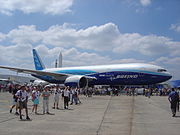
The 777-200LR Worldliner embarked on a well-received global demonstration tour in the second half of 2005, showing off its capacity to fly farther than any other commercial aircraft. On November 10, 2005, the 777-200LR set a world record for the longest non-stop flight. The plane, which departed from Hong Kong traveling to London, took a longer route, which included flying over the U.S. It flew 11,664 nautical miles (21,601km) during its 22-hour 42-minute flight.
Realizing that increasing numbers of passengers have become reliant on their computers to stay in touch, Boeing introduced Connexion by Boeing, a satellite based Internet connectivity service that promised air travelers unprecedented access to the World Wide Web. The company debuted the product to journalists in 2005, receiving generally favorable reviews. However, facing competition from cheaper options, such as cellular networks, it proved too difficult to sell to most airlines. In August 2006, after a short and unsuccessful search for a buyer for the business, Boeing chose to discontinue the service.[9][10]
[edit] Future concepts
In May 2006, four concept designs being examined by Boeing were outlined in the Seattle Times. Codenamed after the well-known Muppets (the design team is known as the Green Team), the designs concentrated primarily on reducing fuel usage. All four designs illustrated rear-engine layouts.
- "Fozzie" employs open rotors and would offer a lower cruising speed.
- "Beaker" has very thin, long wings, with the ability to partially fold-up to facilitate easier taxiing.
- "Kermit Kruiser" has forward swept wings over which are positioned its engines, with the aim of lowering noise below due to the reflection of the exhaust signature upward.
- "Honeydew" with its delta wing design, resembles a marriage of the flying wing concept and the traditional tube fuselage.
As with most concepts, these designs are only in the exploratory stage intended to help Boeing evaluate the potentials of such radical technologies.[11]
[edit] Environmental record
Researchers at the University of Massachusetts have listed Boeing as the thirteenth-largest corporate producer of air pollution in the United States.[12] According to the Center for Public Integrity, the United States Environmental Protection Agency has linked Boeing to more than twenty Superfund toxic waste sites.[13] In 2006, the UCLA Center for Environmental Risk Reduction released a study showing that Boeing's Santa Susana Field Laboratory in Ventura, California had been contaminated with toxic and radioactive waste. The study found that air, soil, groundwater, and surface water at the site all contained radionuclides, toxic metals, and dioxins; air and water additionally contained perchlorate, TCE, and hydrazines, while water showed the presence of PCBs as well.[14]
[edit] Divisions
The two largest divisions are Boeing Commercial Airplanes and the Integrated Defense Systems. Integrated Defense Systems is Boeing's space and defense division.
- Boeing Australia, Ltd.
- Boeing Capital
- Boeing Commercial Airplanes
- Airplane Programs
- 787 Program
- Commercial Aviation Services
- BCA subsidiaries:
- Aeroinfo Systems
- Alteon Training, formerly FlightSafetyBoeing
- Aviall, Inc.
- Aviation Partners Boeing, a 50/50 joint venture with Aviation Partners Inc.
- Continental Datagraphics
- Jeppesen, formerly Jeppesen Sanderson.
- Preston Aviation Solutions
- Boeing Integrated Defense Systems
- Advanced Systems
- Network & Space Systems
- Boeing Satellite Development Center, formerly a unit of Hughes Electronics
- Boeing Defence UK, Ltd.
- Precision Engagement & Mobility Systems
- Support Systems
- Joint Ventures
- Sea Launch (40% Boeing)
- United Launch Alliance (with Lockheed Martin)
- United Space Alliance (with Lockheed Martin)
- Phantom Works
- Boeing Shared Services Group
BW Bewise Inc.
Welcome to BW tool world! We are an experienced tool maker specialized in cutting tools. We focus on what you need and endeavor to research the best cutter to satisfy users’ demand. Our customers involve wide range of industries, like mold & die, aerospace, electronic, machinery, etc. We are professional expert in cutting field. We would like to solve every problem from you. Please feel free to contact us, its our pleasure to serve for you. BW product including: cutting tool、aerospace tool .HSS Cutting tool、Carbide end mills、Carbide cutting tool、NAS Cutting tool、Carbide end mill、Aerospace cutting tool、Фрезеры’Carbide drill、High speed steel、Milling cutter、CVDD(Chemical Vapor Deposition Diamond )’PCBN (Polycrystalline Cubic Boron Nitride) ’Core drill、Tapered end mills、CVD Diamond Tools Inserts’PCD Edge-Beveling Cutter(Golden Finger’PCD V-Cutter’PCD Wood tools’PCD Cutting tools’PCD Circular Saw Blade’PVDD End Mills’diamond tool ‘Single Crystal Diamond ‘Metric end mills、Miniature end mills、Специальные режущие инструменты ‘Пустотелое сверло ‘Pilot reamer、Fraises’Fresas con mango’ PCD (Polycrystalline diamond) ‘Frese’Electronics cutter、Step drill、Metal cutting saw、Double margin drill、Gun barrel、Angle milling cutter、Carbide burrs、Carbide tipped cutter、Chamfering tool、IC card engraving cutter、Side cutter、NAS tool、DIN tool、Special tool、Metal slitting saws、Shell end mills、Side and face milling cutters、Side chip clearance saws、Long end mills、Stub roughing end mills、Dovetail milling cutters、Carbide slot drills、Carbide torus cutters、Angel carbide end mills、Carbide torus cutters、Carbide ball-nosed slot drills、Mould cutter、Tool manufacturer.
Bewise Inc. www.tool-tool.com
BW специализируется в научных исследованиях и разработках, и снабжаем самым высокотехнологичным карбидовым материалом для поставки режущих / фрезеровочных инструментов для почвы, воздушного пространства и электронной индустрии. В нашу основную продукцию входит твердый карбид / быстрорежущая сталь, а также двигатели, микроэлектрические дрели, IC картонорезальные машины, фрезы для гравирования, режущие пилы, фрезеры-расширители, фрезеры-расширители с резцом, дрели, резаки форм для шлицевого вала / звездочки роликовой цепи, и специальные нано инструменты. Пожалуйста, посетите сайт www.tool-tool.com для получения большей информации.





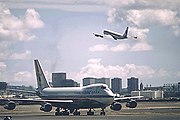
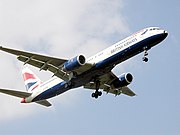

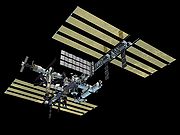


No comments:
Post a Comment